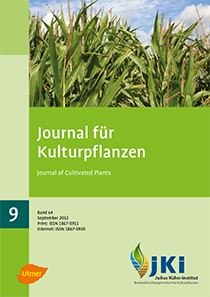Spatial patterns of microsclerotia from Verticillium dahliae Kleb. in soils of Bavarian maple stands
Keywords:
Acer, Verticillium, stem canker, microsclerotia, drought, nekrosis, soilborne pathogenAbstract
During the last years, the Bavarian State Institute of Forestry received increasing numbers of announcements that dealt with necrosis on stems of maple trees caused by the soilborne fungus Verticillium dahliae Kleb. In this study, five forest areas were investigated along transects up to 100 m by soil sampling and mapping of diseased trees to find out if the pathogen had been introduced by infested maple seedlings. Our results yielded no evidence for this assumption. The spatial distribution of microsclerotia concentrations in the soil did not correlate with spatial patterns of diseased trees. This indicates that Verticillium was established on the sample plots independently from healthy or infested maple trees. Counting of year rings of infested maple trees revealed that the trees had developed their necrosis immediately after the drought in the year 2003. Hence, a connection between these extreme climate conditions and disease incidence cannot be excluded.
DOI: 10.5073/JfK.2012.09.03, https://doi.org/10.5073/JfK.2012.09.03








